Everything you need to know about your bathroom renovation timeline
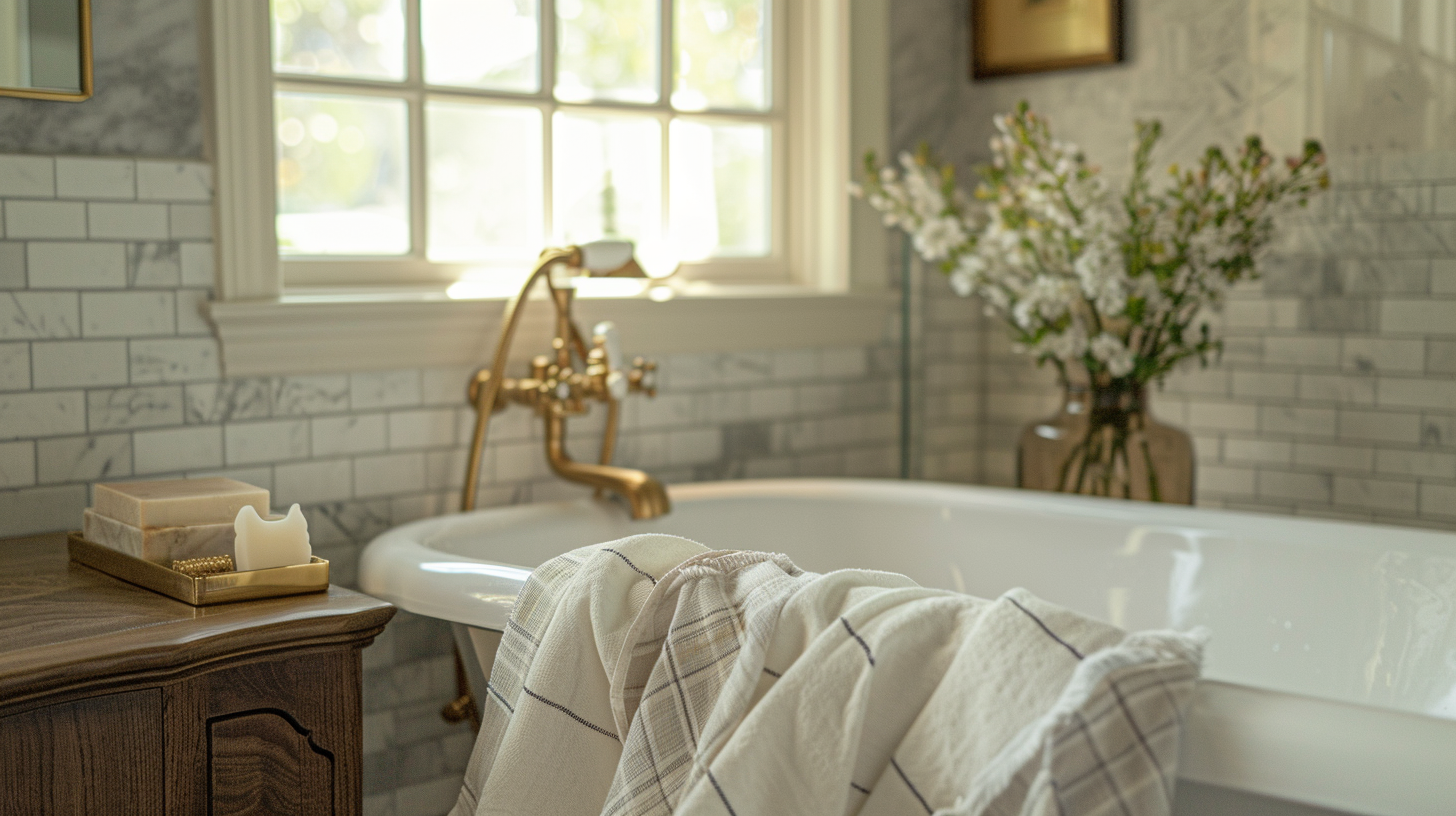
Our bathrooms are among the most used spaces in our homes, right? After all, they’re where your day begins and ends. Thus, ensuring this oh-so important room is functional can help you enjoy them better and improve their value over time. However, renovating a bathroom isn’t exactly a weekend project. It requires planning, hard work, and coordination!
Whether it’s a small bathroom update or a full-scale remodel, the timeline can often be longer than people expect which is why I’m here to ensure you’re prepared. I want to give you a realistic idea of how long it generally takes to renovate a bathroom so you can set proper expectations before starting.
By the end of today’s post, you’ll have a clear picture of how long your renovation could take and feel more confident about the project. Keep reading, and I’ll break it all down for you!
How Long Does it Take to Renovate a Bathroom?
On average, a standard-sized bathroom remodel will take 3-4 weeks to complete from start to finish, while a larger or more complex bathroom remodel could take upwards of 8 weeks or more. Now, this might sound like a long time, but that’s because a lot goes into a bathroom renovation, and there are some factors that can affect your timeline.
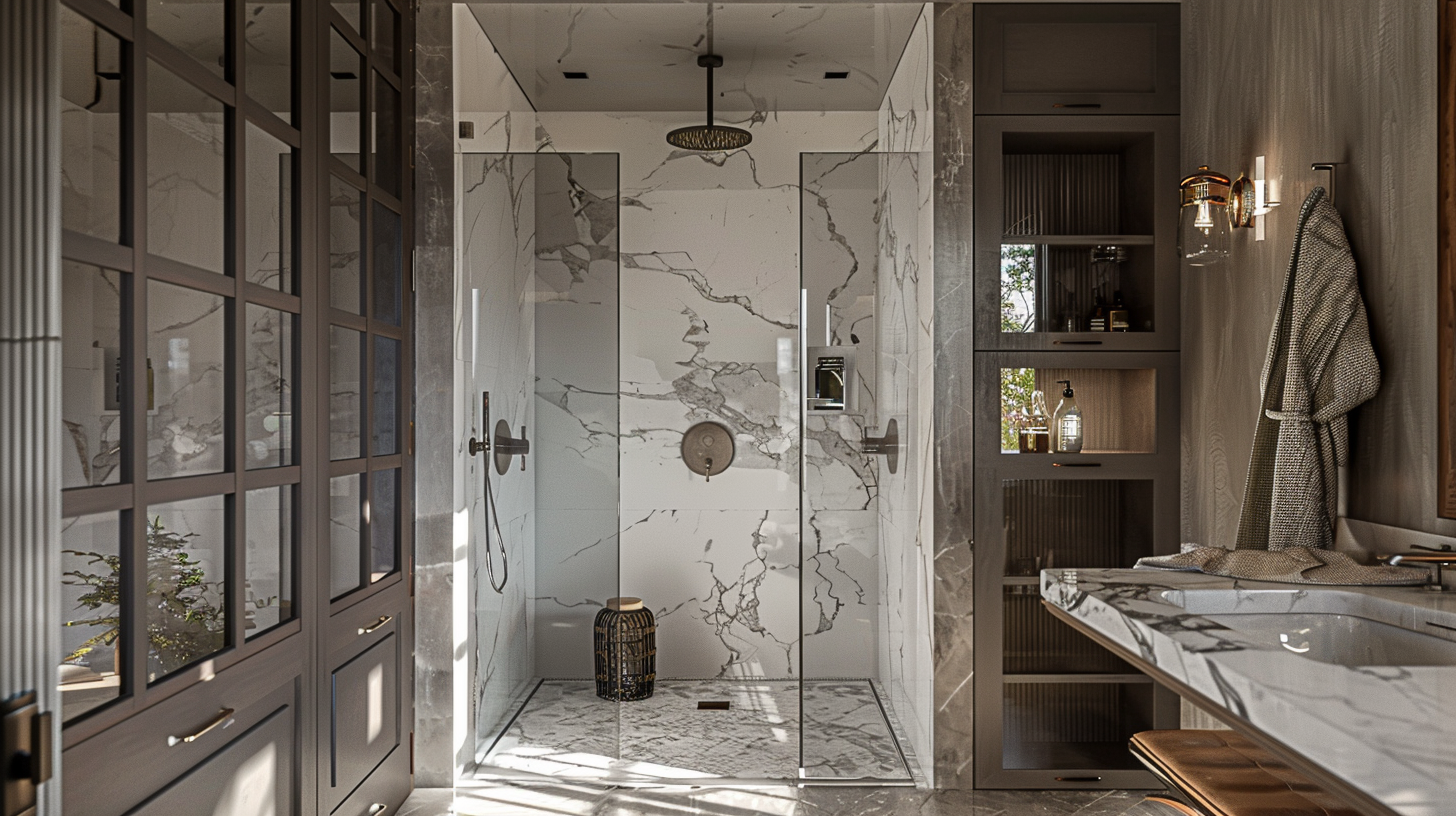
Some factors that can affect the timeline include:
- Size of the Bathroom: Naturally, a small bathroom takes less time than a spacious one.
- Design Complexity: The more intricate your design plans, the longer the process.
- Plumbing and Electrical Work: If your bathroom renovation requires moving major plumbing or rewiring, you can expect some delays.
- Material Availability: If you’re waiting on special-order tiles or fixtures, this could push your timeline out by a few days or weeks.
- Permits: Larger bathrooms and those that require permission from homeowners associations tend to take a bit more time.
So, while you might hope to zip through your bathroom renovation in a couple of weeks, I’ll advise you to pad your schedule and allow for some flexibility.
A Breakdown of the Bathroom Renovation Process
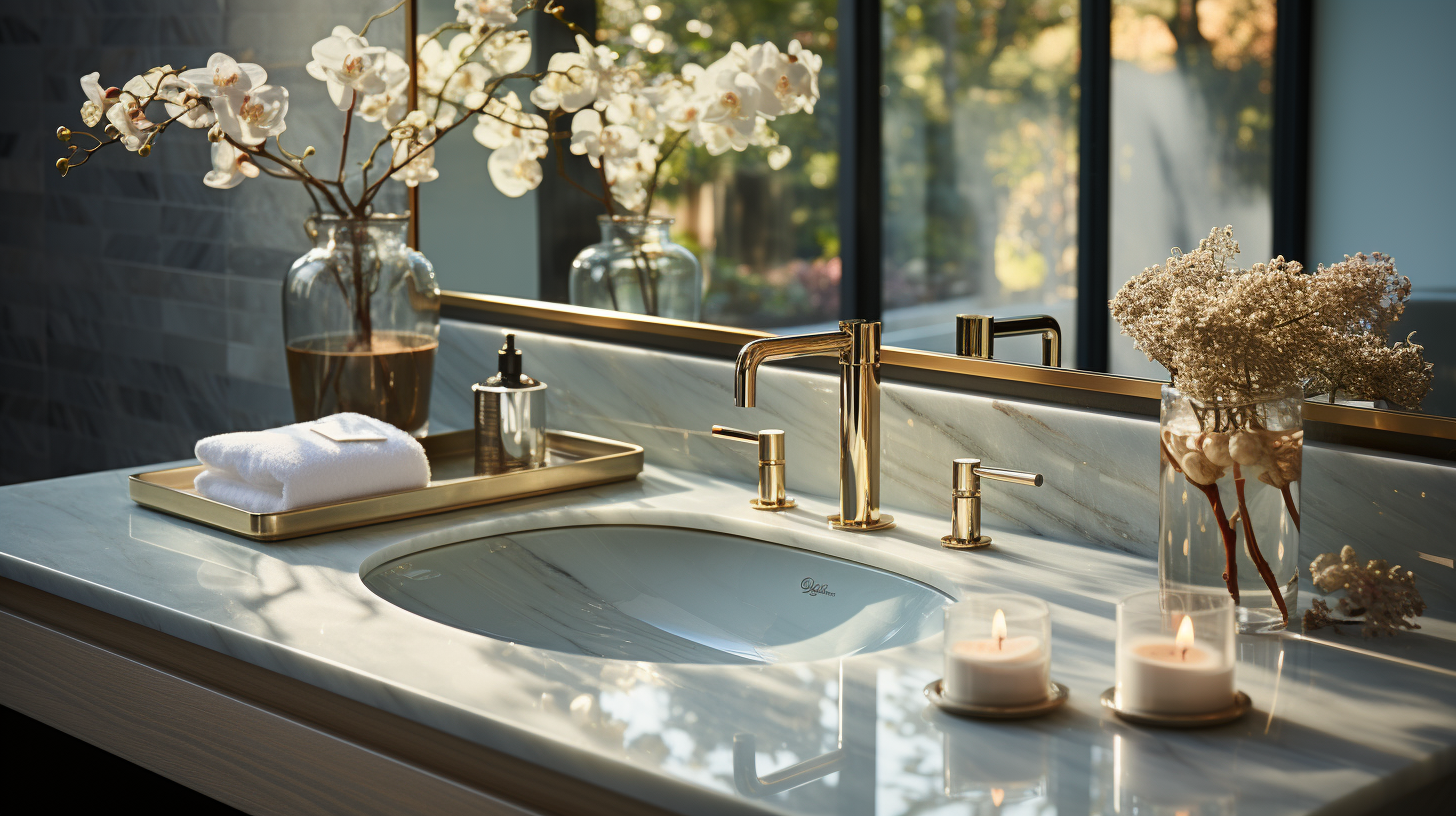
Planning & Pre-Construction
The first thing you’ll want to do is have a clear design plan. Are you keeping the layout or completely rearranging it? Here, it’s crucial to decide how you want the space to function and feel. Where will the tub go? How much storage do you need? Is there enough room for that double vanity you’ve been dreaming about?
Next, you have to pick the right team. This is where you’ll want to consider working with an architect or a general contractor to help you map out your vision. Depending on your location you may need one or both to make sure your bathroom is up to code.
Now, onto budgeting. You have the vision; now it’s time to decide how much you’re willing to spend on the renovations. Consider the cost of the materials needed, the cost of payment for contractors, and unexpected expenses that can creep up.
Demolition
During demolition, the contractors will remove existing walls, floors, fixtures, and anything else in the renovation zone. Basically, this is where the entire space is stripped down so your crew can start fresh. It’s also a perfect opportunity to check for hidden issues like mold or leaks.
First to go are any old plumbing fixtures, followed by tearing out cabinets, drain lines, and wall tiles. Then, they’ll dismantle drywall and ceiling materials and thoroughly remove flooring.
Plumbing Work
Once any outdated plumbing is removed, your plumber will snake in new drains, vents, and water supply lines. Depending on the layout changes, they’ll also ensure that new pipes are installed or rerouted. New fixtures like your sink and toilet will also be installed. For this, you’ll want to hire an experienced and licensed plumber, which can typically be arranged through your contractor.
During this stage, you can also bring in your shower or bathtub. Your contractor will have to ensure the tub or shower is aligned, fitted, and connected to the water supply and drainage system. If you’re adding modern features like a rainfall shower or freestanding tub, they would have to ensure that everything is watertight and seamless.
If your bathroom is small, the good news is that plumbing updates are usually quicker. Sometimes, depending on the complexity, the plumbing work can be completed within 1-2 days. However, if your bathroom is larger and your design is complex, this timeline can stretch.
Electrical Fixtures
This involves installing new wiring for overhead lights, vanity lighting, and exhaust fans, as well as updating outlets (hello, built-in USB ports). This is also when they’d add features like heated floors or towel racks if they’re on your wishlist.
Early in the construction phase, your contractor and architect will work together to ensure that all the wiring for your lights and outlets is perfectly planned and properly placed. They’ll also safely connect the overall bathroom wiring to your house’s power supply. They also have to ensure that the electrical work complements the plumbing.
Installation of Drywall on Walls and Ceiling
The drywall is installed after all the electrical and plumbing work has been completed. It’s nailed or screwed into place, covering the studs and framing and making the walls look seamless. This is the canvas that you’ll paint, tile, or decorate later!
It’s pretty straightforward, but it needs to be done right especially if moisture is a factor in your bathroom. Contractors often use moisture-resistant drywall (commonly greenboard) for bathroom walls and ceilings to prevent mold and mildew. Once it’s dry, the surface is sanded down, leaving you with a smooth finish, ready for paint or tile.
This step is essential to ensure durability and moisture control. Once the drywalls are up, you can really start visualizing your dream bathroom!
Painting
This is the part where your bathroom really starts to come to life! Now, painting in a bathroom isn’t as simple as slapping on your favorite color. Because of the moisture in the air (thanks to all those long, steamy showers), you’ll need to use a paint that’s resistant to mildew and moisture. Satin or semi-gloss finishes are perfect for bathrooms because they’re durable, super easy to clean, and won’t let mold creep in.
But before the painting is done, your contractor will make sure that the drywall is properly sanded and primed. A good primer helps the paint stick and creates a uniform surface, especially if you’re painting over drywall. If there are any areas where plumbing or electrical work requires holes or patches, these will be repaired first so the final result is smooth.
Tile Installation
Tiles protect your walls and floors from moisture but add a layer of luxury and texture. They typically go on the floor, walls in your shower or surrounding your tub, and as a backsplash behind the sink. The tiles need to be durable and slip-resistant for the floor, while wall tiles, particularly in wet areas like the shower, protect from water damage.
Once you’ve picked your preferred tile designs, the surfaces must first be prepped to ensure they’re clean, level, and ready to support the tiles. Then, a layer of mortar is spread on the surface, and each tile is meticulously laid out with spacers to ensure it is all aligned.
Once the tiles are set, they need to be grouted. This fills the gaps between the tiles and seals and protects them from moisture.
Other Fixtures
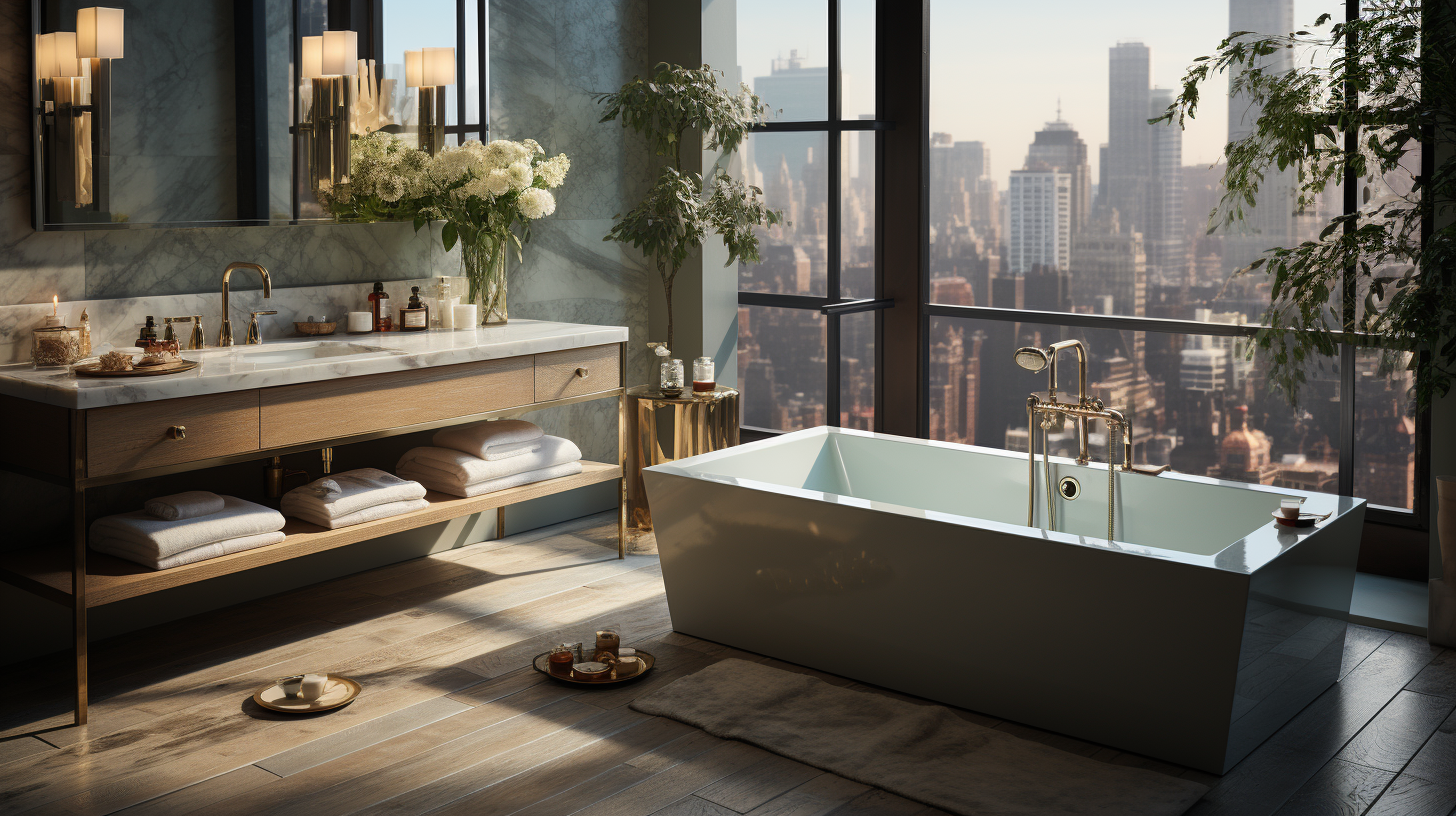
In this final process, you put the final touches on your bathroom. Think mirrors, towel racks, shelving, and that perfect vanity light that makes every morning routine feel a little more glamorous. These details may seem small, but they make your space functional and stylish and reflect your taste.
Installing a large mirror can instantly make your bathroom feel more spacious, while choosing fixtures in materials that complement your design whether sleek chrome, warm brass, or matte black harmonizes your overall look. You might also want to install that floating shelf to display your favorite products, a chic towel ring by the sink, or even a built-in medicine cabinet for storage.
And, let’s not forget good lighting. From sconces by the mirror to recessed lighting for a spa-like glow, doing this can elevate the mood of your bathroom. If you enjoy a little extra pampering, you can also install stylish bidets, patterned rugs, or lush hanging plants to completely transform your ambiance.
How Often To Renovate Bathrooms
There’s no hard-and-fast rule, but most experts suggest doing a full bathroom renovation every 10 to 15 years. Your bathroom can take a beating with frequent use. From constant moisture to daily wear and tear, even the best materials eventually show their age. Plus, there are always evolving trends and technology.
Cosmetic updates, like repainting or swapping out light fixtures, can be done more frequently say every 3 to 5 years to keep the space looking fresh and stylish. But if we’re talking about a full overhaul, every 10 to 15 years should do.
Ultimately, how often you should renovate a bathroom depends on your taste, the age of your home’s infrastructure, and how well you’ve maintained the space.
How To Project Manage A Bathroom Renovation
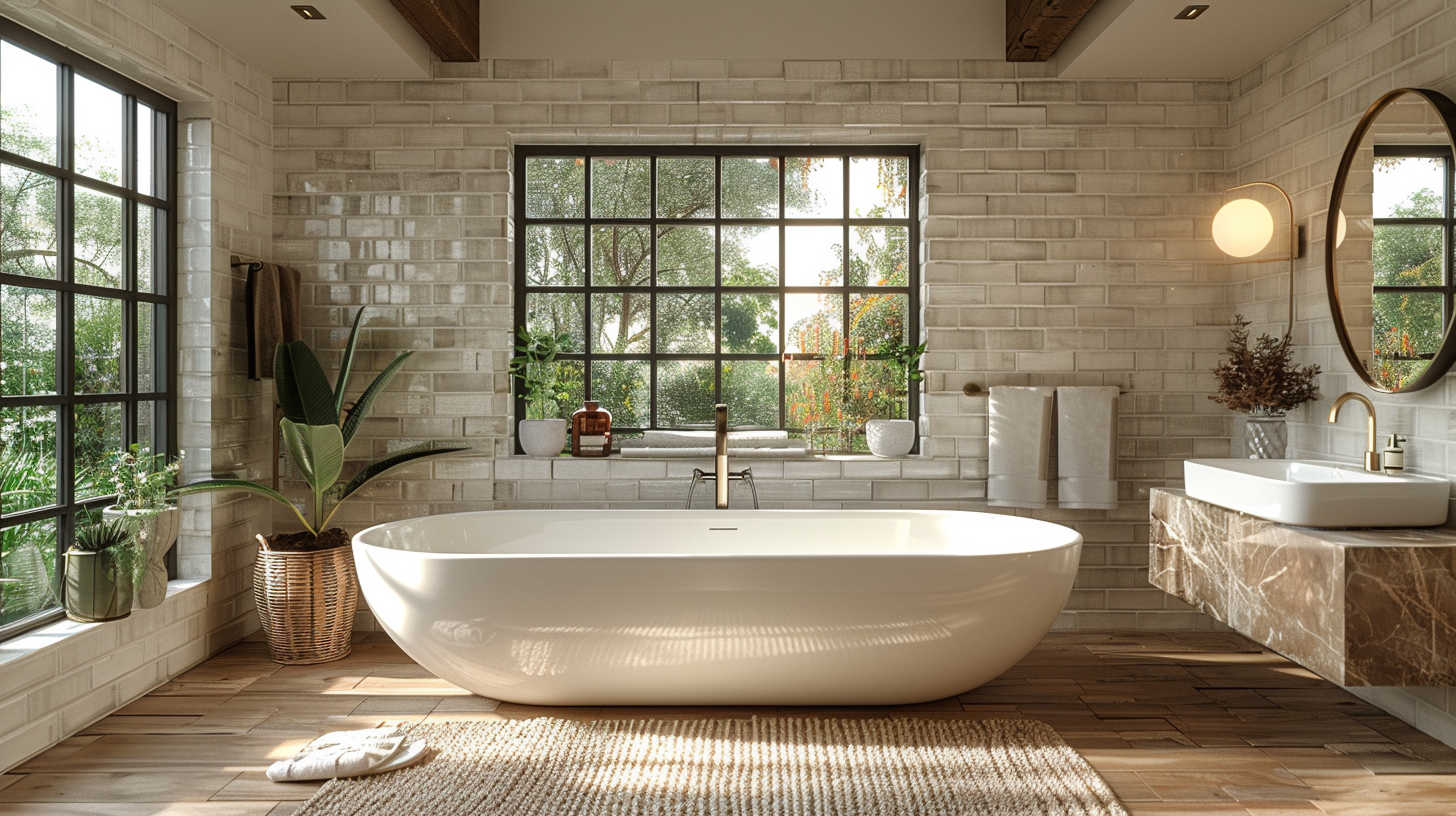
Determine the team you will need.
One of the first big decisions you will make when managing your bathroom remodel project is whether to hire a designer and contractors or take on tasks yourself. Depending on how handy you are, you can save a lot of money if you are able to do painting and tiling or even basic cabinet installation. Always hire professionals to do plumbing and electrical work. You will safe a lot of headaches down the road.
Contractors have experience, expertise, and speed. They can often complete a bathroom renovation in a fraction of the time it might take you if you’re tackling it yourself after work or on weekends. Plus, they handle the nitty-gritty like permits, plumbing, and electrical work.
Prepare a budget.
To create a budget for your bathroom remodel, start by being realistic about your numbers. First, determine what you can afford to spend. Then, break down costs into categories like materials, labor, permits, and those surprise expenses that seem to pop up out of nowhere (because, trust me, they will).
Be sure to prioritize. If heated floors are non-negotiable but marble countertops can wait, adjust your budget accordingly. And whether you decide to DIY or hire professionals, ensure you get multiple quotes from contractors to compare.
Consider your renovation timeline.
When considering your renovation timeline, you have to be strategic and flexible. Generally, smaller bathrooms might take a few weeks, but larger projects can easily stretch to several months.
Since you already know that the renovation process occurs in phases, you can set realistic construction times for each phase. Also, don’t forget potential hiccups like plumbing surprises or permit delays that can throw things off. So, plan extra time for each step, and make sure your contractors are on board with the timeline.
Lastly, ensure the schedule aligns with your life. If you’re managing the project yourself, consider when you have time to oversee it, especially if you’re coordinating multiple professionals or handling part of the project yourself.
Understand the bathroom renovation process.
It begins with demolition, how much will depend on how complete your renovation will be. If you are removing all existing elements, this will take a few weeks. The next step will be the plumbing roughing which means all the pipes are installed can connect to the water source for future use.
After roughing, electrical work would be done. Be sure to confirm all the outlets you need and make sure they are GFI and NEC compliant. Safety first! Your contractor and design team will have taken care of that so you can have peace of mind that everything will be installed correctly and safely.
Once demo, electrical and plumbing is done, the bathrooms starts to take shape and not look as scary! If you are changing wall locations or adding any, this would be the time when framing and drywall would be added. After that we are ready for tiling, painting and getting the finishes installed.
At this stage your space should be back to looking like a bathroom! Now it’s onto the finishing elements, installing the vanity, plumbing fixtures, medicine cabinets, light fixtures and accessories such as hooks and towel bars. Congratulations your renovation is done!
Conduct regular inspections.
At each stage of the renovation process, from demolition to painting, take the time to ensure things are done correctly. It’s best to catch issues early, whether it’s a crooked fixture or a delay. This will save you headaches later. Walk through the space regularly with your contractor, ask questions, and make adjustments before things are set in stone literally!
If you hired a designer they can do this for you and take another item off your plate. I do this regularly for clients and it’s one of the biggest ways I save them time (and money) during this process. I often am able to catch issues before they become a problem or help solve tricky conditions that are discovered during construction.
Renovating your bathroom can completely transform your home.
Remodeling a bathroom takes time, patience, and a touch of planning finesse, but it’s completely worth it when you see the final result. Whether you’re redoing a small bathroom or giving your space a complete makeover, you can set realistic expectations now that you understand how long it takes.
I’d love to hear your thoughts on these tips, so feel free to drop me a DM or send an email to let me know how your bathroom renovations turned out! And remember, our team is always here to help you with any Interior Design, New Builds, or Renovation projects!


